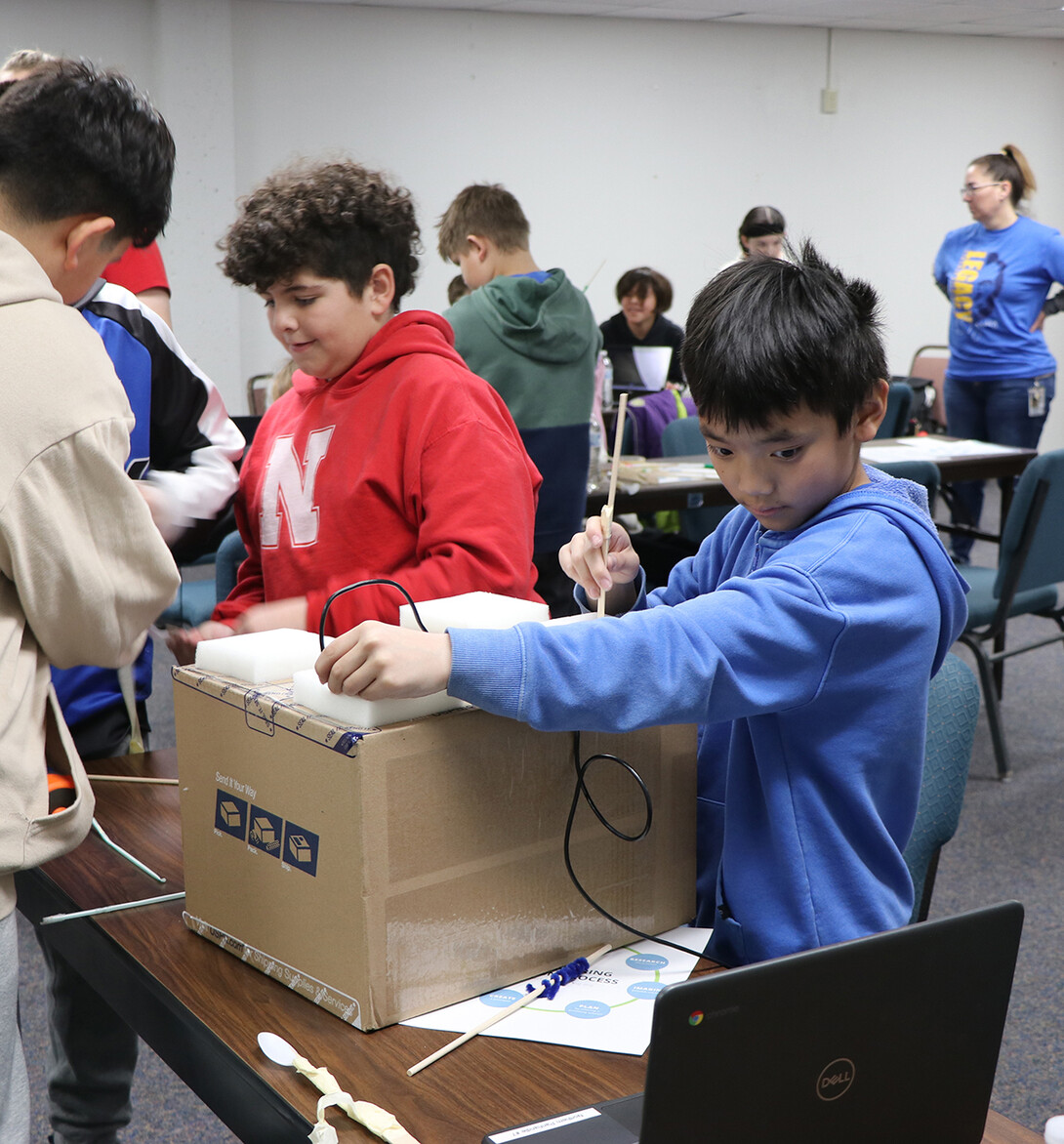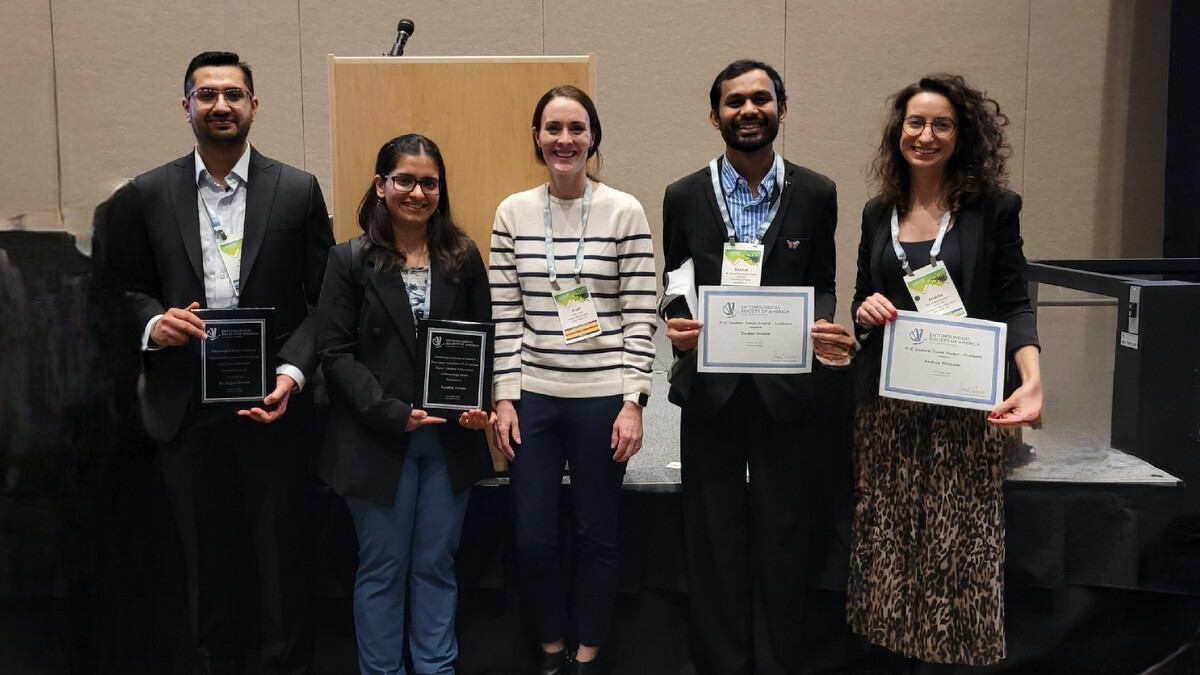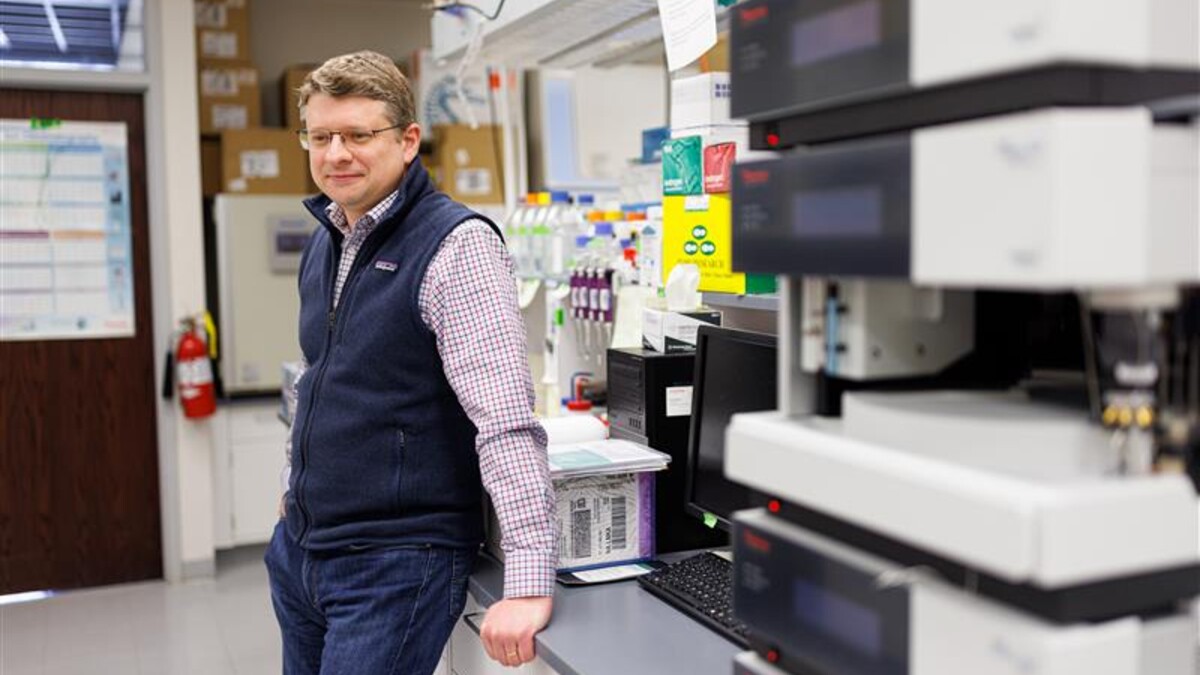
Lincoln, Neb. —Fifth graders flooded the halls of the Panhandle Research Extension and Education Center in Scottsbluff on Feb. 7, when the Nebraska Extension held its second annual Incredible STEM Day. The day featured hands-on activities incorporating science, technology, engineering, and mathematics.
“We put (activities) together through the Panhandle 4-H team,” said Nathan Rice, Nebraska Extension 4-H educator. “We had a couple last year we didn’t like and replaced them with two new ones, microbits and coding drones.”
The students from Mitchell Elementary, Northfield Elementary, and Lincoln Elementary, both of Gering, rotated between hour-long workshops studying drones, microbits, mineral properties, and biomedical technology. Fifth graders in the microbits workshop worked with small computers, sensors, and LED lights to create moving animals made of cardboard.
“We wanted the day to offer things schools couldn’t normally get. Such as high-end technology using things most schools don’t have and capturing all of the engineering design processes in stem categories and things they hadn’t seen before.” Rice said.
In three of the four workshops, computers and technology were used, but the students also flexed their mental computers in the Mineral Properties session.
“I really wanted to create a lesson that allowed youth to feel like scientists and do an experiment. Geology was a course that I loved in college and to teach. In this lesson, we spend time talking about minerals, experimenting with their chemical and physical properties, and then youth use their data to try to identify the minerals correctly. We also spend time talking about how these minerals form rocks, particularly rock formations in Western Nebraska,” said Sarah Paisley, 4-H educator for Garden and Morrill Counties.
Students identified minerals such as talc, biotite, magnetite, and more through their unique properties. They also explained the minerals' makeup and utilized a decision tree to identify minerals.
Rice said both the teachers and the kids found the day a blast.
“The teachers said it was the first time coding for the students, and I saw them (students) working to the last minute of the sessions, which is good to see they’re not bored but engaged to the last minute.”







